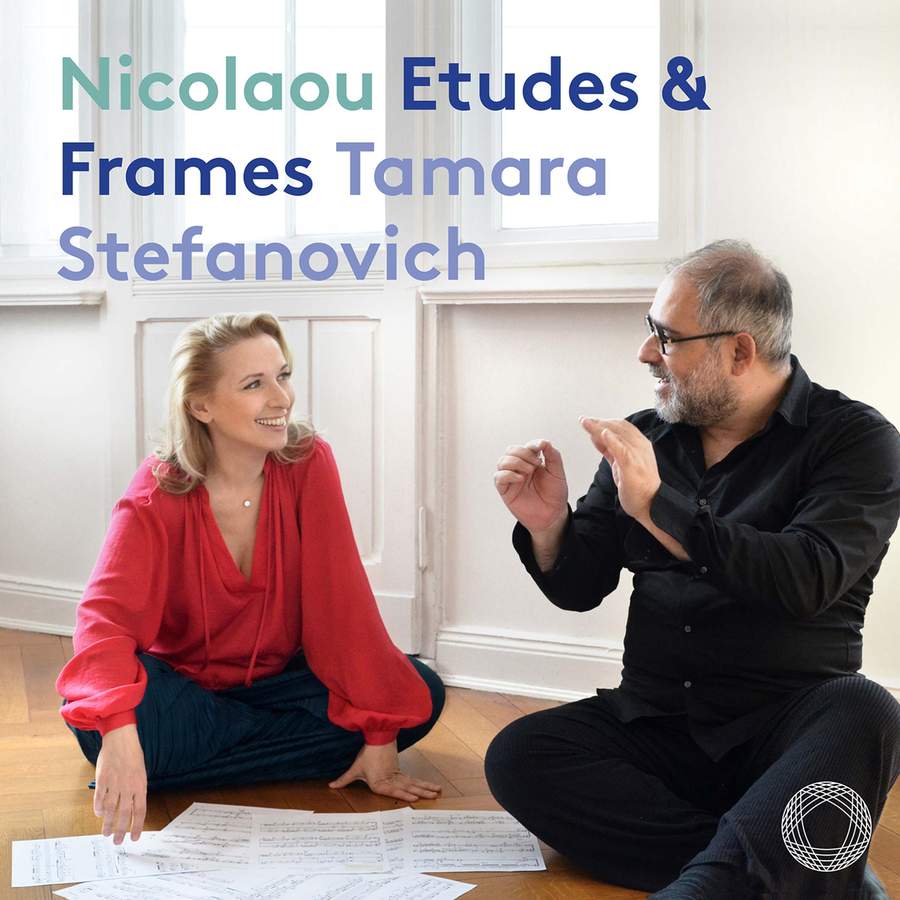NICOLAOU Etudes & Frames (Tamara Stefanovich)
View record and artist detailsRecord and Artist Details
Genre:
Instrumental
Label: Pentatone
Magazine Review Date: 03/2023
Media Format: CD or Download
Media Runtime: 57
Mastering:
DDD
Catalogue Number: PTC5187 041

Tracks:
| Composition | Artist Credit |
|---|---|
| 15 Etudes for Piano |
Vassos Nicolaou, Composer
Tamara Stefanovich, Piano |
| Frames |
Vassos Nicolaou, Composer
Pierre-Laurent Aimard, Piano Tamara Stefanovich, Piano |
Author: Jed Distler
At first one might describe Vassos Nicolaou’s 15 piano Études as elaborately detailed and structurally shipshape works that build upon Messiaen’s and Ligeti’s contemporary étude templates. As each work progresses, however, Nicolaou’s own voice gradually establishes itself.
In the opening piece, ‘Anodos’, persistent rapid lines assiduously wend their way from the lowest to highest registers, where cross rhythmic effects resulting from meticulously demarcated dynamics and accents catch the ears off guard. The composer himself likens the start/stop trajectory of ‘Monologos’ to a crazy actor playing a monologue, interrupted by imaginary voices. The third étude’s painstaking pedal indications and specific staccatissimo articulations take their cue from myriad digital delay effects used in electronic music. Étude No 4’s title, ‘Chimes’, is self-explanatory. The daunting polyrhythmic complexities laid out across six staves add up to a sight-reading nightmare for mere mortals, yet the music actually sounds quite easy-going and improvisatory.
No 6, ‘Daughter of Anima’, abounds with darting gestures enhanced by sympathetic resonance from bass notes sustained via the middle pedal. Although Nicolaou credits Art Tatum and Oscar Peterson for inspiring ‘Entrap’, its mathematically proportioned rhythmic scheme suggests more of Conlon Nancarrow’s player piano studies downsized for human hands. My two favourite études are the most extreme in terms of mood. The billowy chords of ‘Filter’ unfold like moving clouds of varying densities, where the silences between sounds hold equal weight. By contrast, ‘Teso’ commences with explosive clusters that gradually materialise into nocturne-like phrases, after which shorter explosions appear as aftershocks.
Pianist Tamara Stefanovich relates to Nicolaou’s Études just as Pierre-Laurent Aimard did with Ligeti’s, meaning that her scrupulous, caring and fervently committed interpretations carry reference authority. The same can be said for Frames, a large-scale four-hand work written for the pianists as a wedding gift and impeccably performed by them here. The jagged, dissonant fragmentary passages that typify many of the Études spill over into Frames, and arguably go on too long for what they have to express. Yet these gestures give way to welcome moments of lyrical respite and tonal undercurrents. WDR’s engineers do the sonic and timbral demands of Nicolaou’s piano-writing full justice.
Discover the world's largest classical music catalogue with Presto Music.

Gramophone Digital Club
- Digital Edition
- Digital Archive
- Reviews Database
- Full website access
From £8.75 / month
Subscribe
Gramophone Full Club
- Print Edition
- Digital Edition
- Digital Archive
- Reviews Database
- Full website access
From £11.00 / month
Subscribe
If you are a library, university or other organisation that would be interested in an institutional subscription to Gramophone please click here for further information.




